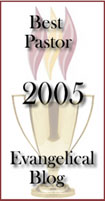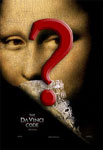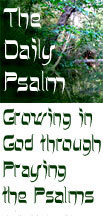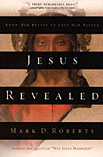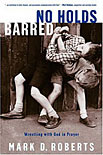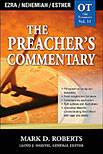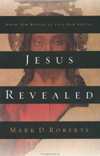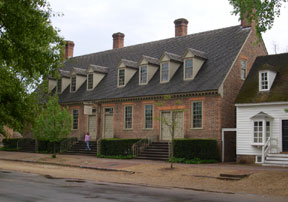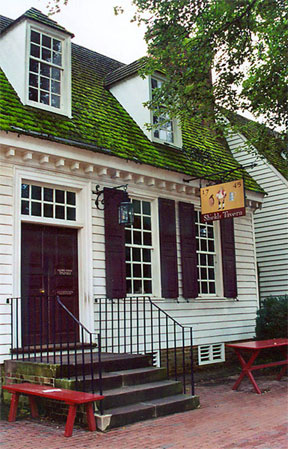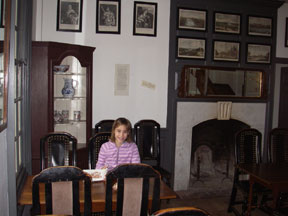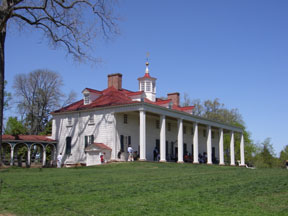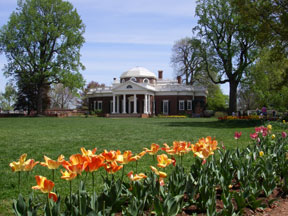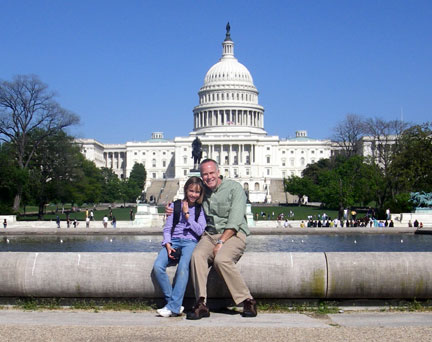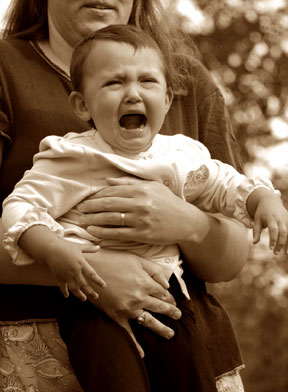| |
A Resource by Mark D. Roberts |
|
When in Virginia . . .
by Rev. Dr. Mark D. Roberts
Copyright © 2006 by Mark D. Roberts
Note: You may download this resource at no cost, for personal use or for use in a Christian ministry, as long as you are not publishing it for sale. All I ask is that you give credit where credit is due. For all other uses, please contact me at mark@markdroberts.com . Thank you.
When in Virginia . . . 
Part 1 of the series When in Virginia . . . 
Posted for Monday, April 24, 2006
I recently returned from a week in Virginia. You could call it a vacation, though it was really more of a recreational research trip. My daughter, you see, is writing a major report on Virginia for school. Since she was on spring break last week, and I was taking time off after Easter, it seemed right for the two of us to explore the Commonwealth of Virginia together.
During our six days in Virginia, we spent two of them in Washington DC and environs. Though the nation's capital is not technically part of Virginia, and therefore irrelevant to my daughter's report, we couldn't come all this way without visiting Washington's major venues. It was my daughter's first visit to the capital. We were able to tour several sites on the Virginia side of the Potomac, including: Arlington National Cemetery, the Marine Memorial (Iwo Jima), and Mt. Vernon. Then we went south, taking in Fredericksburg, Monticello/Charlottesville, and Williamsburg. Our first four days were warm and clear, the last two rainy. Nevertheless, we had a fine time, and my daughter has plenty of info for her state report.
If you're planning a visit to this part of the country, let me offer a few bits of advice. If you live in Virginia, you can check to see if my advice is sound. (I was actually born in Virginia, but only lived there for a couple of months, so I can't claim to be an expert . . . only an appreciative novice.)
1. Don't drive in Washington DC. Take the Metro.
Whatever you do, don't drive in the capital. The streets and traffic are crazy, complete with lots of road constructions and pedestrians that don't obey traffic lights. I drove around a bit on Sunday evening when the downtown area was fairly empty, and even then I didn't have much fun. The good news is that you don't have to drive in DC because public transportation, principally the Metro (subway), is excellent. If you have a rental car and you're staying in the suburbs, drive to one of the Metro stops where you can park your car for the day. The Metro fare cards are easy to use once you figure them out, which is surely the most difficult thing about taking the Metro.
2. Visit Mt. Vernon early in the day.
The trip to Mt. Vernon is well worth the time and effort. Plan on giving it a half day, including driving time and touring the grounds. We arrived in late morning, and already the line for going inside the house was long, requiring a seventy-minute wait. I'd recommend arriving at Mt. Vernon shortly after it opens to avoid the line. Do the house tour first. This is especially true in the summer, when it can be uncomfortably hot in Virginia.
3. Make the trip to Monticello.
Thomas Jefferson's estate, Monticello, is in the middle of Virginia, about three hours from Washington. The drive through the Virginia countryside is part of the pleasure, with lush forests and bucolic farmlands. The Monticello house tour is most informative (better than Mt. Vernon). If at all possible, be sure to take the garden tour as well. It's amazing to learn how involved Jefferson was with the nitty-gritty details of his garden.
4. Spend plenty of time in Colonial Williamsburg.
Colonial Williamsburg is an amazing "city" that has been restored to look as it did at the time of the American Revolution. Many of the buildings in Williamsburg were actually built in the 18th century. Others were built in the last 100 years, but on the basis of exacting research to make them as authentic as possible. In fact, scholars continue to suggest renovations to existing buildings so as to make them even more historically accurate than they are today.
Part of what makes Williamsburg so delightful is the "staff," a team of people who dress up as if they were residents of the city in 1770. Not only do they look the part, but also they remain in character, speaking as if they had plenty of knowledge of colonial Williamsburg and absolutely no knowledge of anything in the last two centuries. In the afternoon, my daughter and I participated in a street theater presentation, Revolutionary City, that dramatized the crisis in Williamsburg prior to the War of Independence. This two-hour drama was convincingly acted, and helped to illustrate the peril facing the colonists as they considered going to war against the most powerful nation on earth. |
|
|
My daughter watches as a patriot argues for freedom from Britain.
|
|
The Brick House Tavern in the center of Colonial Williamsburg
|
One of the best decisions I made prior to our visit to Williamsburg was to stay in one of the "Colonial Houses." About twenty of the original dwellings have been refurbished for overnight guests, all of this managed by the Williamsburg Inn. The rooms are comfortable, but simply furnished. (My small, hard, twin bed was probably more comfortable than the beds for 18th century guests, but not by much. And, yes, there were indoor, private "necessaries," to use the colonial euphemism. No need to use the privy out back.) It cost a few more pounds sterling to stay in a Colonial House, but it was worth every farthing, partly for the experience, and partly for the convenience. My daughter and I were literally in the center of the historic district, in a tavern where Thomas Jefferson once stayed. You can't exactly do this in California.
In general, Williamsburg is not an inexpensive place to visit. There is a generous admission charge (to visit the historical displays and re-enactments; you can walk the streets for free). If you eat in the historic taverns, which I highly recommend, you'll also pay more than you would at the local coffee shop. But I never felt as if I weren't getting a good value for my money, which I can't always say for tourist venues. Besides, all proceeds beyond expenses go to the non-profit foundation that cares for Colonial Williamsburg. So you can have fun, support a good cause, and learn something all at the same time. Not bad at all. (Tomorrow I share one of the surprising things I learned while at Williamsburg.)
Coffee, Anyone? 
Part 2 of series When in Virginia . . . 
Posted for Tuesday, April 25, 2006
When I first moved to Irvine in 1991, there were no coffee houses in town, at least not to my knowledge. Sure, we had plenty of coffee shops, like Denny's and Coco's, but there weren't any places where one could get a good, strong cup of coffee and sit for a while to read, think, or chat with friends. Then, not long after my move to Irvine, I was saved from my coffee-challenged existence by the opening of the first Starbucks in town.
I had known about coffee houses from my college days in Cambridge, Massachusetts. In fact, I can still remember my first espresso drink, a cappuccino ordered in a small coffee house in the Boston's North End, the Italian section of town. We had at least two such businesses in Cambridge, the Coffee Connection and Algiers Coffee House. There you could get a strong cup of coffee and pass the hours, at least until the cigarette smoke became unbearable. I understand that the Coffee Connection closed some years ago, no doubt chased out of town by the omnipotent and omnipresent Starbucks. I think Starbucks occupies the same address as the Coffee Connection. As far as I know, Algiers is still operating in its haunts next to the Brattle Street Theatre. In the late 70's, coffee houses were pretty rare except in college towns and other bohemian paradises.
Times change, however, and coffee houses have become a dime a dozen. My once coffee-house-less city now boasts eleven Starbucks stores, not to mention Tully's, Diedrich Coffee, Coffee Bean & Tea Leaf, Seattle's Best, It's a Grind, and many others. I've spent literally thousands of hours in these establishments over the last fifteen years.
I had always assumed that Seattle was the birthplace of the ubiquitous American coffee house. That's where Starbucks was born in 1971. But on my recent trip to Virginia, I discovered that coffee houses are much more central to the Anglo-American experience than I had ever known before. Here are some tidbits I picked up while having a cup of coffee and a biscuit in Shields Tavern in Williamsburg, Virginia. (As a tavern, Shields serve alcohol, but only in the evening. Technically speaking, it's a coffee house during the day.)
• England's first coffee house opened in Oxford (where else?) in 1650. Two years later London had its first coffee house. By the end of the 17th century, there were over 2,000 coffee houses in London.
• For several decades, coffee was more popular in England than tea. Both were introduced at about the same time, in the mid-1600s.
• English coffee houses did not serve alcohol, and did not have women customers. They were places for intellectual conversation, sometimes called "Penny Universities," because one paid a penny for admission. Many businessmen and other professionals used coffee houses as their primary place of business.
• One coffee house run by a man named Edward Lloyd was popular with insurance underwriters, who eventually joined together as Lloyd's of London.
• Coffee houses were central to colonial life in America, especially in places like Virginia where residents were proud to be Englishmen.
• Although Williamsburg had a relatively small population in the 1700s, it hosted a few coffee houses. They were situated near the Capitol, and were places where colonial leaders did a significant amount of business.
So, from a historical point of view, Starbucks didn't so much create something new for American life as help us get back in touch with a part of our colonial heritage. I guess we can all thank Starbucks for this bit of historical reenactment. |
|
|
Shields Tavern, a daytime coffee house in Williamsburg, Virginia
|
|
My daughter enjoying her breakfast at Shields Tavern
|
Of course since Starbucks has trademarked the word "Venti" (Italian for "twenty", Starbucksian for extra large coffee), and since "Venti" wouldn't have been used in Colonial Williamsburg, Shields Tavern offers coffee drinks in three sizes: Regular, Large, and Historic. I had a historic latté, if for no other reason than to enjoy drinking in a bit of American history.
Whither the Renaissance Man? 
Part 3 of series When in Virginia . . . 
Posted for Wednesday, April 26, 2006
I recently visited Mt. Vernon, the estate of George Washington, and Monticello, the estate of Thomas Jefferson. During these visits I was reminded of how amazingly versatile and multi-talented these men were. They were, no doubt, prime American examples of the Renaissance man.
What do I mean by this? Well, both Washington and Jefferson were notable statesmen, of course. They demonstrated unusual wisdom in their founding and leading of the United States. Jefferson, of course, was the principal writer of the Declaration of Independence, while in his early thirties. He also served as the first Secretary of State and later as President. Washington led the colonial armies to an unlikely victory over Britain, and then spent two terms as America's first president. All of this is well-known, of course.
But Washington and Jefferson were so much more than merely statesmen (as if they were merely anything). For one thing, both men designed their marvelous homes. I don't mean that they worked closely with their expert architects. Rather, they were the expert architects and chief engineers of their homes. Much of the construction they supervised from a distance, since they were involved in fighting a war and running a government.
Washington was also a surveyor. It is said that he himself surveyed the original boundaries of the District of Columbia. Yet more than a statesman, architect, and surveyor, Washington thought of himself a farmer. He ran a large plantation, one that began with tobacco and other products, and ended up growing wheat because it was more profitable. (For more on Washington the farmer, check out this article.)
Jefferson was also a farmer. He approached the growing of plants scientifically, and in fact had one particular plant named in his honor because of his botanical expertise. Yet farming only begins to describe Jefferson's accomplishments, which included: inventing, scientific experimentation, speaking several languages, playing the violin, archeology, founding a university, and so on. Jefferson's abilities were memorialized in a remark of John F. Kennedy when he hosted forty-nine Nobel Prize winners at the White House: "I think this is the most extraordinary collection of talent, of human knowledge, that has ever been gathered at the White House, with the possible exception of when Thomas Jefferson dined alone." |
|
|
Mt. Vernon
|
|
Monticello
|
How, I wonder, were Washington and Jefferson able to accomplish so much, in addition to their most well-known, public achievements? Of course both men had to have been extremely intelligent. I wouldn't be surprised if Jefferson was a true genius. Yet there are plenty of brilliant men and women in public office today, and I'm not aware of any who come close to the varied accomplishments of Washington and Jefferson.
It seems to me that, in part, the diverse resumes of these two men reflect the relative simplicity of their time of history. For example, both Washington and Jefferson were able to design their marvelous homes. This is no small accomplishment, to be sure. But I expect they didn't have to deal with building codes, fire marshals, building inspectors, and all that today's architects have to face when trying to build a simple home. Moreover, Monticello and Mt. Vernon did not include some of the most complicated parts of contemporary homes: electrical systems, plumbing for natural gas and water, forced air heating and air conditioning, and sewage systems. In order to acquire the knowledge to design a home today, one would have to devote considerably more time than was required for Washington and Jefferson to become proficient in domestic architecture.
Today we value specialization, both by necessity and by choice. In part, this is a requirement of the complexity of our day. If you want to be a successful lawyer, for example, you'd better become an expert in one area of the law. There's no way any human being living today could be a master of commercial law, constitutional law, criminal law, family law, and torts. Moreover, we tend to reward specialists for their narrow expertise. Family doctors, for example, make about half of what anesthesiologists make (recent statistics here).
We also expect professionals, whether they are Presidents, Congressmen, lawyers, or accountants, to work many more hours than must have been expected of Washington and Jefferson in their governmental roles. There's simply no way they could have accomplished so much in so many different areas if they had been working seventy hours a week running the country. This is especially true given the limitations imposed two centuries ago by the lack of electricity. But today, if a Congressman announced that he planned to work only forty hours a week at his government job, I expect he'd be voted out of office as a lazy man who was taking advantage of the voters.
What I'm suggesting helps to explain why we don't have many Renaissance men and women today, and why it seems we have so few serving in key roles in government. Is there a downside to today's penchant for narrow focus and extreme specialization? Yes, I believe so, especially when it comes to governing. Excellent leadership requires wisdom and broad perspective. If a person majored in Political Science in college, went to law school, worked for a couple of years as an attorney, and then spent the rest of her life in elected office, that person may be bright and competent, but it's likely that she would lack the kind of wisdom that comes from broad life experience. Maybe when someone runs for President today, we should require that person to design a house and then oversee the building of the house. The winner would be the one whose house didn't blow over in the first wind.
A Hot Tip for Fathers (and Mothers too) 
Part 4 of series When in Virginia . . . 
Posted for Thursday, April 27, 2006
If you've been following my blog in the last few days, you know that I recently took a trip to Virginia with my daughter. The ostensible purpose was to help her with research for her fifth grade state report. But the deeper reason for our trip was so that Kara and I could have an adventure together. It was a fantastic experience, one that I will cherish as one of the most precious weeks of my life.
My hot tip for fathers (and mothers, too) is a simple one: Spend time one-on-one with your children, and if possible, for a few days in a row. I realize that some of my readers aren't in a place to do this, because you don't have children, or your children are grown, or . . . . But if your children are in a place where they can get time away with you, then by all means take advantage of this timely opportunity.
I grew up in a family with four children. It wasn't easy for my parents to get time alone with any of us. Moreover, I expect this wasn't something that my parents thought about very much. But I remember with particular fondness those times when I got to be one-on-one with my father (going to ball games) or my mother (shopping for school clothes). |
|
| |
My daughter and me in front of the Capitol
|
Now that I'm on the parent side of the fence, I see a couple of main reasons to get solo time with your children. First, it allows you to see your children more clearly. When my son and daughter are together, their interactions take up a lot of psychic space. Yet when I get alone with either of them, I can see and appreciate their distinct personalities. After spending a week with my daughter, I feel as if I know here three times better than I did before.
Second, one-on-one time with a child fosters deeper bonding between parent and child. My daughter and I have a close relationship in ordinary life. But what we experienced in Virginia was special, and brought us even closer together. You don't have to travel a long distance of spend much money to have this kind of experience. In the past, my time alone with my kids has been taken up with hiking, which costs nothing, and camping, which is cheap, or staying in an inexpensive motel. |
|
| |
My son and me reading in the High Sierra
|
What I'm recommending isn't easily accomplished if you have more than two children, or if you're a single parent with several children, or if you have limited vacation time. But if you can make a way to get some extended time with your children one-on-one, you won't be sorry.
Griping About Crying Babies and Inconsiderate Parents 
Part 5 of series When in Virginia . . . 
Posted for Friday, April 28, 2006
I just don't get it. Why do some parents seem oblivious to the fact that their crying babies don't improve the ambience of room? Why, when some parents make every reasonable effort to care both for their child and for the innocent bystanders, do others do nothing?
I've complained about this before when it comes to crying babies in church. In my series Easter from the Other Side of the Pulpit I talked about how annoying it can be when parents don't take their little howlers out of church after trying unsuccessfully to quiet them down. For some reason, babies seem especially unhappy with my Easter preaching, because that's usually when they cry in church.
Most parents in my congregation, I should hasten to add, score high on the "sensitivity to others" scale. If they take their babies into worship services, which is fine with me, by the way, and if their babies start to squawk, they quickly carry their children out so others aren't disturbed. Most parents seem to operate on the "two or three squeals" rule. First squeal: no harm no foul. Second or third squeal: parent and baby hustle to the lobby.
| In my recent trip to Virginia, I found myself trapped with parents who had never learned the "two or three squeals" rule. It happened first at Mt. Vernon. My daughter and I had stood in line for 70 minutes in order to tour Washington's home. Included in our tou group was a family with a boy I'd estimate to be about 18 months old. He was fine in line, where he could ramble around. But as soon as we entered the house, his father picked him up, and the boy began to cry. Interspersed between his loud sobs were the unmistakable words: "No. Down. No. Down." Clearly this young man wasn't interested in the design and history of Mt. Vernon. I can't say that I blame him, either. And I don't blame his parents for being unable to calm him. But I do blame them for making no effort to remove their son from the group. It wasn't just that his crying was annoying for the half-hour tour. The rest of us had a hard time hearing what the tour guides were saying. |
|
| |
© Bradley L. Marlow at www.istockphoto.com |
The exact same thing happened in Monticello. No, it wasn't the same crying boy. I was on the lookout for him. But, once again, a family had a toddler who didn't have much interest in Jeffersonia, and who decided to express his boredom through loud crying. And, once again, the parents made no effort to remove their son from the small rooms of Jefferson's home so the rest of us could hear what our guide was saying. In this case, however, one of the Monticello authorities approached the father and explained that they have a system whereby one parent takes a crying child outside while the other parent completes the tour before letting the first parent do the tour unencumbered by a squalling infant. In this way, no parent loses the chance to see inside Jefferson's home or loses his or her place in line. Everybody wins, except, I suppose for the crying baby.
While struggling to hear tour guides speak over the shrieks of unhappy children, I wondered why some parents are unwilling to take their children out of enclosed spaces so others can hear.
Could it be that some parents get so used to the sound of their crying child that they almost don't hear it anymore? Does it become for them a kind of background noise, like a rumbling air conditioner? I actually think this happens for many parents.
Or could it be that some parents are simply selfish? Do they want to complete the Mt. Vernon tour with their whole family, rather than waiting for others to finish so they could hold the baby outside?
Or could it be that some parents are endlessly and irrationally hopeful? Are they thinking, no matter what logic and history would suggest, "Maybe he'll stop crying in a minute or so"?
Or could it be that some parents possess an ideological commitment to having children be a part of their world, even when their crying disturbs others? Are they implicitly saying, "How dare you want to exclude my child? Children cry. And they have every right to be in the world. So get over it!"
I remember watching a story on a television news program a few months ago. It focused on a restaurant that had put up a sign that read something like this: "Your children are welcome here, but please don't let them run around in the restaurant. If they cry, please take them out until they are comforted." The point of the story was the anger of many parents over the sign. They felt incensed that their children were not really welcome at the restaurant. And they didn't seem to feel the slightest obligation to care about the needs of other patrons, who would have preferred a quiet meal to one seasoned with infantile lamentation and indoor track meets.
For what it's worth, I think it's great for families to do things together, even with small children. And I think our adult world needs to be more open to the needs and experiences of children. For example, when I baptize an infant, I always tell parents in advance not to worry if their baby cries. That's what babies do, after all. For another example, at our church we've made a considerable effort to give parents a variety of options for their young children, including: a top-quality nursery, a serviceable "cry room," and an ethos in which children are welcome in worship. Having said this, I must add that I would hope parents, whether they be in church, in restaurants, or in historical homes, would think of the impact of their children's crying on others, and would act in an appropriately considerate manner.
Freedom of Religion in Virginia? 
Part 6 of series When in Virginia . . . 
Posted for Sunday, April 30, 2006
Freedom of religion . . . it seems quintessentially American. Yet religious freedom was not part and parcel of colonial life in Virginia. The colony recognize the Church of England, and had a state church, in which residents of Virginia were required to pay taxes that supported ministers and built churches.
In the mid-17th century, state authorities cracked down on Quakers, who were whipped and/or fined for failing to worship in an official Anglican church. In time colonial officials granted greater freedom to religious dissenters, as long as they continued to pay the required church taxes.
In the 18th century, Presbyterianism began to make its presence known in Virginia. Many people were attracted to the emotional rhetoric of Presbyterian preachers, though this distressed the more reserved Anglicans. Presbyterians were permitted to meet in 18th-century Williamsburg, as long as they continued to pay the taxes that supported the local Anglican church. A display in the current Presbyterian Meetinghouse in Williamsburg (from which I derived the content for this blog post), included the text of a petition from several citizens to meet together as Presbyterians:
At a Court held for York County in the Town of York at the Courthouse on Monday the 17th day of June 1765 and in the fifth Year of the Reign of our Sovereign Lord King George the Third.
These are to Certify the Worshipful Court of York that We intend to make use of a House in the City of Williamsburg Situate on part of a Lott belonging to Mr. George Davenport as a place for the Public Worship of God according to the Practise of Protestant Dissenters of the Presbyterian denomination which we desire may be Registered in the Records of the Court and this Certification we make according to the direction of an Act of Parliament commonly called the Act of Toleration
P.S. As we are not able to obtain a Settled Minister we intend this Place at present only for occasional Worship when we have opportunity hear any legally qualified Minister.
[Signed by seventeen men from Williamsburg]
Though Virginia granted these Presbyterians the freedom to meet in 1765, full freedom of religion was not earned until 1786, when the General Assembly of the Commonwealth of Virginia passed The Virginia Act for Establishing Religious Freedom. Written by Thomas Jefferson in 1779, it languished for seven years before being passed by the Assembly. Central to this Act was the following statement of religious freedom: |
|
|
The Presbyterian Meetinghouse in Williamsburg, Virginia. (This is a historical recreation, not the original building, but is quite like the original.)
|
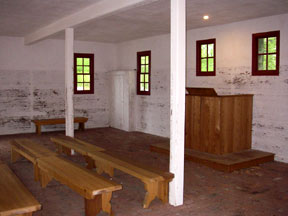 |
Inside the Presbyterian Meetinghouse. Not exactly fancy digs.
|
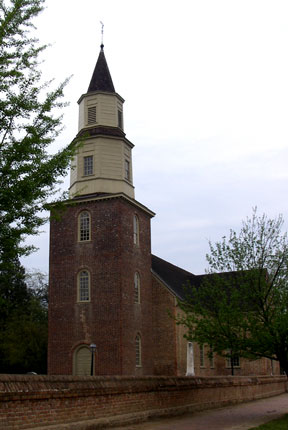 |
The Episcopal Bruton Parish Church, originally constructed with tax dollars, cuts a much finer figure than the Presbyterian barn.
|
Be it therefore enacted by the General Assembly, That no man shall be compelled to frequent or support any religious worship, place, or ministry whatsoever, nor shall be enforced, restrained, molested, or burdened in his body or goods, nor shall otherwise suffer on account of his religious opinions or belief; but that all men shall be free to profess, and by argument to maintain, their opinions in matters of religion, and that the same shall in nowise diminish, enlarge, or affect their civil capacities.
Jefferson considered the writing of this Act to be so important that he made sure it was included on his gravestone. As a Presbyterian who doesn't want to support a state church with my tax dollars, I must thank him.
Home
|
